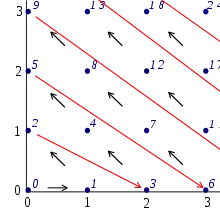I know a function like this exists but I'm not able to find it.
It's not the same as g(x,y) = 2^{x-1} (2y-1) which is used to prove the same thing for naturals because here we want x to be a positive or negative integer. So that function can't be used.
